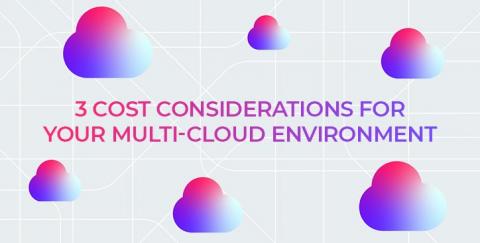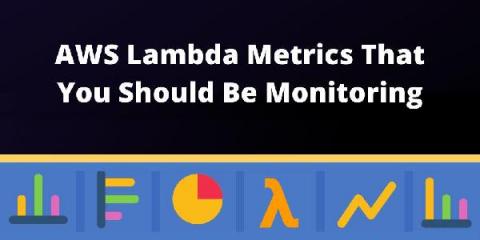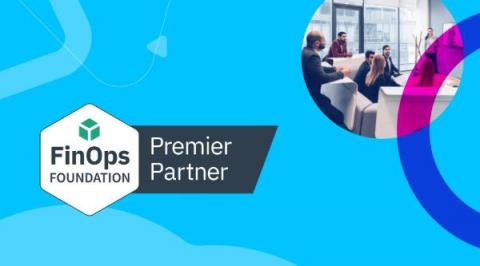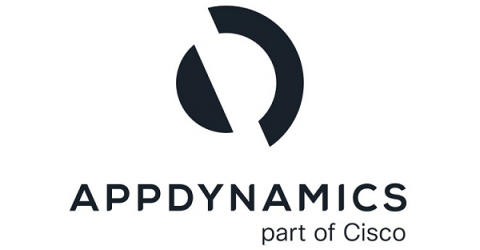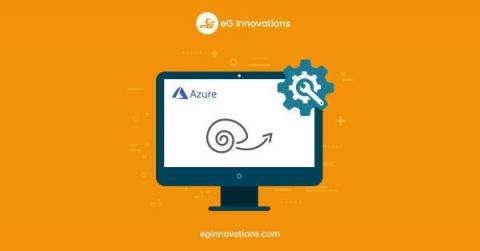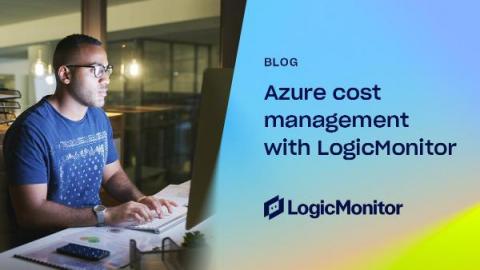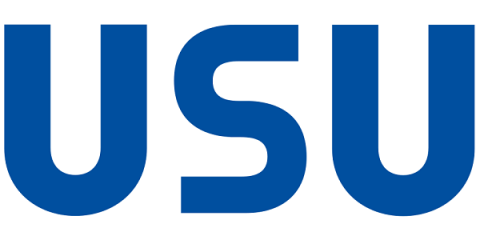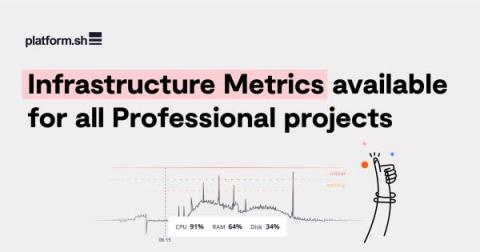Operations | Monitoring | ITSM | DevOps | Cloud
May 2022
How to Protect Your Emails: 8 Best Gmail Account Security Tips
Getting AWS CloudTrail alerts via SNS Endpoint
How To Present ROI On Cloud Computing To The C-Suite
A Recession Is Inevitable. Are Your Cloud Deployments and Development Teams Ready?
The recent market turmoil has everyone from developers to CTOs and founders asking themselves a fundamental question “Is our cloud-deployment strategy recession proofs, and if not, how can we adapt to the new market realities?” Within enterprises of all sizes, leaders are asking hard questions, looking for ways to cut costs without negatively impacting growth.
Easily monitor cloud services for each team in your company
We were introducing the Profiles feature! You can now have the same account on multiple profiles or teams with this feature. Our customers requested it, and we delivered it!
3 Cost Considerations For Your Multi-Cloud Environment
New Cloud Region, Cloud Logging Update, & more!
Cloud Data Fusion: Concepts of Networking
The Challenges of Building Multi Cloud
Multi cloud has long been a contentious topic when you talk about cloud infrastructure. Infrastructure as code tools such as Terraform and Pulumi have made deploying to any cloud much easier - you can now use a single interface to deploy infrastructure to virtually any cloud environment. However, the effort of creating infrastructure for each cloud provider still requires significant expertise and time to get right, leading many to see it as a effort not worth taking.
Augment your Digital Transformation with a Cloud-Wise Strategy
Red Hat Shares - Cloud services basics
Enterprises spent US$178 billion on cloud infrastructure services in 2021, 37% more than in 2020. And “global spending on cloud services is expected to reach over US$482 billion in 2022.” Clearly the use of cloud services is on the rise. But what are cloud services exactly, and why are they beneficial? Cloud services are infrastructure, platforms, or software that are hosted by third-party providers and made available to users through the internet.
Lumigo + JetBrains
Lumigo uses IntelliJ IDEs everywhere. The back-end developers love their PyCharm and us frontend developers use WebStorm all the time. No doubt that it’s one of the most popular IDE’s out there. One of the perks at Lumigo is that as employees, we can use 10% of our working time to invest in personal projects or do cool things for self-development and innovation.
What is Box: Pros, Cons, and Box.com Pricing
5 Common Amazon Kinesis Issues
Amazon Kinesis is the real-time stream processing service of AWS. Whether you got video, audio, or IoT streaming data to handle, Kinesis is the way to go. Kinesis is a serverless managed service that integrates nicely with other services like Lambda or S3. Often, you will use it when SQS or SNS is too low-level. But as with all the other services on AWS, Kinesis is a professional tool that comes with its share of complications.
The pandemic has indeed caused a massive spike in cybercrime
Recent events of the pandemic have facilitated a rapid implementation of remote working tools, causing an increase in ransomware attacks – businesses suffer from financial and data losses. In order to prevent such attacks, companies must not only educate their employees about best cybersecurity practices but also embed professional security solutions within the internal business processes and systems.
Do you also live in Cloud 9? Cloud installators (agents, server)
Logz.io's New Integration with AWS Kinesis: Send Metric Data Without a Single Line of Code
After creating your Logz.io account, the first step for onboarding is to send you log, metric, and trace data. Logz.io makes this flexible – allowing for multiple ways to get data into your Logz.io account depending on your use case and technology stack. Today, we’re excited to announce another easy and fast way to get AWS metric data into Logz.io: by setting up a CloudWatch metrics stream and a Kinesis Firehose.
The 5 Best AWS Cost Explorer Alternatives In 2022
Densify Wins Intel 2022 Partner of the Year for Software Innovation
On May 11th, at Intel Vision, Densify won Intel Partner of the year for Software Innovation. This award recognizes the impact of our jointly developed offering: Intel Cloud Optimizer (ICO). <="" a=""> Working with Intel we launched a program for enterprise customers that combines Densify analytics software and Intel expert guidance to help match customer workloads with the cloud instances that enable the best performance at the lowest possible cost.
On-premise vs. On the Cloud
Since its emergence in the mid-2000s, the cloud computing market has evolved significantly. The benefits of reliability, scalability, and reduced set-up costs have created a demand to fuel an ever-growing range of “as-a-service” offerings, resulting in an option to suit most requirements. But despite the advantages, the question of cloud or on-premise remains valid.
Cybersecurity Measures Every Project Manager Should Know About
We're Joining The Snowflake Partner Network - Bringing Cloud Cost Intelligence
Tools for tracing microservice architecture
Top Things To Consider When Connecting IoT Devices To The Cloud
How FinOps Can Work With Engineering To Achieve Cost Intelligence Maturity
IDC Study Highlights Spot Customer Benefits
The Present and Future of Arm and AWS Graviton at Honeycomb
As many of you may have read, Amazon has released C7g instances powered by the highly anticipated AWS Graviton3 Processors. As we shared at re:Invent 2021, we had the chance to take a little sneak peek under the Graviton3 hood to find out what even more performance will mean for Honeycomb and our customers.
The ultimate guide to migrate from Heroku to AWS
Application connectivity in a hybrid cloud
A successful hybrid cloud architecture is one that addresses how to build, deploy, manage and connect a hybrid mix of applications across a hybrid infrastructure environment. These applications will span multiple infrastructure footprints—across cloud providers and customer datacenters and multiple Kubernetes clusters, as well as systems that run on vendor management systems (VMSs), bare metal and edge environments.
Terraform Kubernetes Continuos Optimization Demo
Managing Microsoft Teams Services: Redesigning IT Silos for Cloud-Based Services
IT silos, which originated from operational processes that made sense in an on-premise world are still a fact today. It’s easy to understand how these silos, which segregate and isolate IT data and operations from other points in the infrastructure came about.
Get more insights with the new version of the Node.js library
We’re thrilled to announce the release of a new update to the Cloud Logging Library for Node.js with the key new features of improved error handling and writing structured logging to standard output which becomes handy if you run applications in serverless environments like Google Functions!
Spot PC at Work: Automation and Onboarding
Let's Talk About the Orion Platform and Hybrid Cloud Observability
What is SaaS Cloud Security and What Are SaaS Security Best Practices?
Azure Monitoring with DX Unified Infrastructure Management
Now Available on AWS Marketplace: PagerDuty Runbook Automation and PagerDuty Process Automation On Prem
We are excited to announce that PagerDuty® Runbook Automation and PagerDuty® Process Automation On Prem are now available on the AWS Marketplace, the leading global cloud provider. With more than 200 different cloud services, AWS makes it simple and attractive to build and grow your cloud-native business and/or migrate your existing infrastructure to the cloud, so you can begin to take advantage of the unlimited scale, agility, and flexibility the cloud offers.
AWS Service Observability using OpenTelemetry
Efficient use of observability statistics is essential to any microservice architecture. OpenTelemetry is a project supported by the Cloud Native Computing Foundation (CNCF) to enhance the observability of microservice projects. AWS Distro for OpenTelemetry (ADOT) is an AWS-supported distribution of the OpenTelemetry project specifically designed to improve the observability of AWS projects.
observIQ Expands Partnership with Google Cloud to Support OpenTelemetry
Breaking news from KubeCon EU 2022
5 Top Cloud Financial Management Software Solutions In 2022
AVD - Azure Virtual Desktop - Usage Trends and Statistics
Technology advancements have now made it possible for organizations to adopt virtual desktop technologies in a hassle-free manner, from the cloud. Microsoft’s multi-session Windows desktop technologies supported on Azure cloud allow admins to provision virtual desktops on-demand. Integration with Azure Active Directory and FSLogix ensures secure access with efficient profile management.
Enabling Hybrid Work with Cloud Desktops
Serverless: The Future of the Internet
Serverless is a technique for executing operations and running cloud compute services on an as-needed basis. Serverless computing is the latest trend in the cloud computing world. It has made it much easier to develop, deploy, and scale applications. Serverless computing means that developers don't need to worry about anything other than their code. They don't need to provision a server or install software to run their code.
Spot by NetApp Joins the FinOps Foundation as a Premier Member
The Hidden Magic of Extensions
AWS Lambda execution lifecycle has main phases: initialization, invocation, and shutdown. In the initialization phase, Lambda creates the runtime environment, downloads the code, imports everything needed, and runs the functions initialization code. In the invocation phase, the Lambda will get an input, process it, and produce an output. After the invocation phase, Lambda will go to an ideal state and wait for the next input.
Supercharge Your FinOps Investment with Optimization
How to monitor your Microsoft Azure data via MetricFire
In this article, we will explain what Microsoft Azure is and how you can monitor its data. We will also learn how to integrate Microsoft Azure with MetricFire. Last, we will look at the benefits of using MetricFire’s monitoring solution with Azure metrics. Try the free trial version of MetricFire and enjoy all the benefits of using our system. Book a demo with our team and discuss in detail the process of integrating Microsoft Azure and MetricFire.
4 key risks in moving to the cloud (and how to mitigate, manage and master them)
Better Together: Combine Real User Monitoring with Synthetics
Top 5 AWS Services Every Developer Should know
On-Prem? Cloud? Hybrid? What is my best option?
With the Cloud Bridge introduction, I started reaching out to our customer base to make sure people are aware of what this feature can do, Usually, I try to keep our customers up to date through blogs or the occasional webinar but with the Cloud Bridge, I went for a more personal approach. Reaching out to our customers individually, presented a unique opportunity to educate them on our Cloud Bridge and by extension what SIGNL4 can bring to the table.
Hybrid Cloud Dominates and Security Tops the To-Do List in Canonical's 2022 Kubernetes and Cloud Native Operations Survey
Released today, data from more than 1,300 global respondents combines with expert analysis to reveal goals, benefits, and challenges of cloud-native technology in 2022 16 May 2022 – Canonical, the maker of Ubuntu, today released data from a new global survey revealing the goals, benefits, and challenges of cloud-native technologies.
Container Cost Management: Allocating Kubernetes Costs The Easy Way
Alerting on error log messages in Cloud SQL for SQL Server
With Cloud SQL for SQL Server, you can bring your existing SQL Server on-premises workloads to Google Cloud. Cloud SQL takes care of infrastructure, maintenance, and patching so you can focus on your application and users. A great way to take better care of your application is by monitoring the SQL Server error log for issues that may be affecting your users such as deadlocks, job failures, and changes in database health.
Introducing a high-usage tier for Managed Service for Prometheus
Prometheus is considered the de facto standard for Kubernetes application metrics, but running it yourself can strain engineering time and infrastructure resources when your usage grows. In March, we announced the general availability of Google Cloud Managed Service for Prometheus to help you offload that burden, and today, we’re excited to announce a new low-cost, high-usage pricing tier designed for customers who are moving large volumes of Kubernetes metrics over to the service.
When Legacy Systems Still Make Sense: The Role of Legacy Tech in Your Hybrid Digital Transformation
Cloud SQL: Concepts of Networking
Amazon EC2 vs Amazon RDS
Once you have decided to migrate your MySQL database to AWS, choosing the services you need from the lot of options available in AWS can be quite overwhelming. Migrating will inevitably raise the question.
New observability features for your Splunk Dataflow streaming pipelines
We’re thrilled to announce several new observability features for the Pub/Sub to Splunk Dataflow template to help operators keep a tab on their streaming pipeline performance. Splunk Enterprise and Splunk Cloud customers use the Splunk Dataflow template to reliably export Google Cloud logs for in-depth analytics for security, IT or business use cases.
Cloud computing powers the world's financial exchanges
Embracing the cloud is not just a case of improving infrastructure, experts believe, but also a way to drive transformation. Many of the world’s largest financial exchanges are transforming the way they run global capital markets through the adoption of cloud computing technologies. In November, financial derivatives exchange CME Group entered a 10-year partnership with Google that will move CME’s IT infrastructure and markets to the cloud.
5 Common Amazon SQS Issues
The simple query service (SQS) was one of the first services AWS offered. It’s a managed queuing service that lets you take pressure from your downstream services. You put your items on the queue, and other services can pull them whenever they have the capacity to work on them. It’s a managed service, so you don’t have to install or maintain the software yourself; you just configure a queue and start pushing to and pulling from it. So SQS is very simple to get started with.
Data Lake vs Data Warehouse: What's the Difference?
Can we create a green web?
Climate change: it’s one of the most pressing challenges of our time. Yet, while the focus is often on power plant pollution, single-use plastics, deforestation, and fossil fuels, web technologies remain among the biggest, least-visible carbon culprits. Inversely, though, it means that web technologies can be part of the solution.
AppDynamics Announces Support for Lambda Function URLs
Our powerful solution provides visibility into your workloads running in AWS Lambda.
Cloud Computing vs. In-House Servers (Pros and Cons)
Eco is now available for AISPL customers in India
How The Experts Build Reliable Cloud Apps
5 features that help you power up AWS observability
Before we take a deep dive into the ways to achieve observability, it is important to understand what observability is and how it is achieved. Frequently, observability is confused with monitoring. Observability provides end-to-end visibility into a system’s internal health by using the data it generates: logs, traces, and metrics. In a multi-cloud environment, observability enables you to detect and resolve anomalies.
Blancco partners with Ethan Indigenous to bridge digital divide in the Indigenous community
MoovingON Opens Amazon AWS Summit with Live Demo of Industry's Highest Automated Healing CloudOps Platform
Cycle Podcast | EP 13 | Derek Chamorro | Next Gen Hardware Security + Insights on Internet Attacks
4 Signs You Have a Cloud Migration Planning Problem
Cloud migration is a complex process, and the more up-front planning you put into it, the more likely you’ll be able to avoid challenges and setbacks during execution. And yet, challenges and setbacks seem to be the norm, not the exception, with almost three-quarters (72%) of those surveyed stating that they’ve run into problems so big they were forced to move migrated applications back on premises or jump into firefighting mode to figure out how to fix them quickly.
5 Important Business Skills Every Engineer Should Learn
Composer Updates with Source Operations
AWS, Azure & GCP: Leveraging Their Full Instance Catalog To The Max
Moving on up - Notification Center now at the organization level
Implementing Microservices on AWS with the Twelve-factor App - Part 1
How Advances in Cloud Security Can Help with Ransomware
Organizations must update their ransomware protection at the same pace that as the attackers changes their tactics. The ransomware scourge continues, with incidents hitting a U.S. record in the second quarter of 2021, as attackers expand into vertical industries and target critical infrastructure. Ransom demands have also been growing. According to IT Governance, the average decryption key rate from attackers is $140,000 yet many organizations end up paying much more than that.
Troubleshooting Slow Azure Virtual Desktop (AVD) Logons
In order to troubleshoot slow Azure Virtual Desktop logons, it is helpful to have a complete understanding of the application and how it operates. Here, we will outline the architecture and key components of AVD, the impact of DNS on the connection flow, and how eG Innovations offers time saving tools to troubleshoot problems with AVD before they negatively impact your organization’s productivity.
Monitoring Azure Stack HCI with SCOM 2022
SCOM 2022 has been recently made GA and I, coming from a SCOM background, was pretty interested in checking out the latest SCOM product. Luckily, Azure Stack HCI management packs were recently released too, so it was as if the stars had lined up for me to drop everything else and check out this new management pack with SCOM 2022. And that is exactly what I did!
Cloud-Hosted or Cloud-Native? Discover Why Cloudsmith Was Born in the Cloud
Today, almost every service now is offered in a “Cloud” variant. But what does that really mean? Are all clouds services equal? It’s easy to see why so many vendors rush to add a Cloud edition/variant of established software they sell. Undoubtedly, there has been a move to Cloud services across the industry, as more and more organizations seek to take advantage of the higher reliability and lower total cost of ownership that Cloud platforms promise.
Five reasons for the management to choose Serverless360
Should Enterprises Migrate or Modernize their Heritage Applications?
Enterprises lately are understanding the need to move their business applications to cloud. Well, one of the major contributing reasons for this move is the rising OpEx and the heavy debt of managing applications in their own environment. Cloud providers are waiting for such opportunities where enterprises are planning to migrate to cloud, the question is will it help or not?
7 Important Things to Include in Your Company Security Policy
Azure Cost Management with LogicMonitor
Blackfire's unique Way of Delivering Python binaries
We may not always know what is happening behind the scenes when we add a dependency to our projects. We expect this process to “just work” to carry on building applications. Little we may know about the level of commitment from maintainers and the amount of work needed to have everyone seamlessly use a library. Let’s hop in backstage to discover the unique way Blackfire releases its Python binaries.
Digital Resilience a Top Priority as Cloud Spending on the Rise
Investments in cloud computing services have steadily increased over the past few years, largely a result of the rise of the digital workplace and the challenges brought on by remote and hybrid work. But there’s another reason businesses are investing more money into cloud solutions: driven by the chip shortage and subsequent hardware crisis, businesses are looking to build their digital resilience.
Compliance And The Cloud
Survey Review: Key Challenges of Scaling Observability with Cloud Workloads
When you migrated critical infrastructure to the cloud, what were your goals and expectations? Odds are, you hoped leaving on-premises infrastructure would produce significant organizational benefits. You probably figured you’d streamline operations and reduce management overhead. You felt you’d have an easier time meeting business goals. Perhaps most important of all, you likely expected your environment would become less complex, and even cost less to operate.
Cost optimised private cloud for financial services
Regulatory compliance and data privacy requirements require financial institutions (FIs) to consider carefully where their applications are running and where the customer data is stored. The data protection and data sovereignty laws in most countries require an enterprise to keep data in certain geographic locations. PCI Data Security Standard, for example, regulates the way the customer and financial transactions data is stored and transmitted.
31+ Best Software Development Tools (Organized By Category)
Monitor your .NET apps with the Datadog extension for Azure App Service
Azure App Service is a cloud-based platform-as-a-service (PaaS) for deploying functions, web apps, mobile apps, and other resources. It allows developers to deploy code—using common languages and frameworks—in minutes without worrying about provisioning or managing infrastructure. Developers can then use Azure App Service to scale their services dynamically to meet demand.
USU wins French automotive supplier as a new customer for SAP license management
How Blockchain Achieves Safer Cloud Storage for Photos
Building a SaaS Architecture with a Single Tenant Application
Most products that run as Software-as-a-Service (SaaS) are built to be multi-tenant, meaning that a single instance or deployment is meant to be used by multiple organizations. There’s a good reason for this: it’s generally easier to scale and operate multi-tenant applications. But in this new age of containers, orchestration, infrastructure-as-code, and Kubernetes, where it’s cheaper, faster, and simpler to deploy a new instance of an application, that may no longer be the case.
Infrastructure Metrics available for all Professional projects
The path to success in software development can be long and challenging. It requires a lot of skills and dedication as it’s not just about building applications, it’s so much more. It is also about being tailored for any situation, requiring us to be quick to adapt to change and to the unexpected.
Agents of Transformation: Talking about cloud migration with AppDynamics GM Linda Tong and Match.com's Garrick Linn
Finding true love is never easy — nor is migrating to the cloud during a pandemic. Learn how Match.com, with help from AppDynamics, deftly managed its digital transformation while helping humans make meaningful connections.
Bitbucket Cloud and Data Center Feature Comparison | Cloud Migration Demo | Atlassian
AWS Summit London - My top 3 sessions
AIOps SaaS vs. On-Premises: What You Need to Know
Changes in the way organizations consume technology are reflected in the growth of the software-as-a-service (SaaS) market.
What Is CSPM? A Closer Look at Cloud Security Posture Management
As we previously discussed in the Automating Your Cloud Security Posture Management (CSPM) Response blog post, CSPM is a vital component in any environment leveraging cloud services. Whether you are using a single cloud or are in a multi-cloud scenario, the complexity of these cloud platforms is constantly expanding. Staying on top of new changes in policies and functionality to ensure that you are maintaining a secure environment is daunting - and almost impossible to do without automation. No one has the resources to spend on maintaining a large team of cloud specialists who just audit everything that is in use.
What Can Energy Efficiency Teach Us About Cloud Cost Management?
Popular Hybrid Cloud Providers Compared
Aligning Dell's Industry-Leading Storage and Data Infrastructure Portfolio With a Comprehensive Monitoring and Optimization Platform
Dell Technologies World is upon us, and in addition to being a welcomed return to the in-person format, it’s also an opportunity for me to reflect on Virtana’s long history with Dell, our integration points, and the synergies with the Dell portfolio.
Confidential Computing and financial services cloud
Cloud computing has been transforming financial IT infrastructure into a utility allowing financial institutions (FIs) to access computing resources on-demand letting FIs offload costs and effort of setting-up and managing their own on-premises infrastructure, improving agility and time to business value. As more and more financial institutions rely on hybrid cloud services, data security in the cloud is a business imperative.








